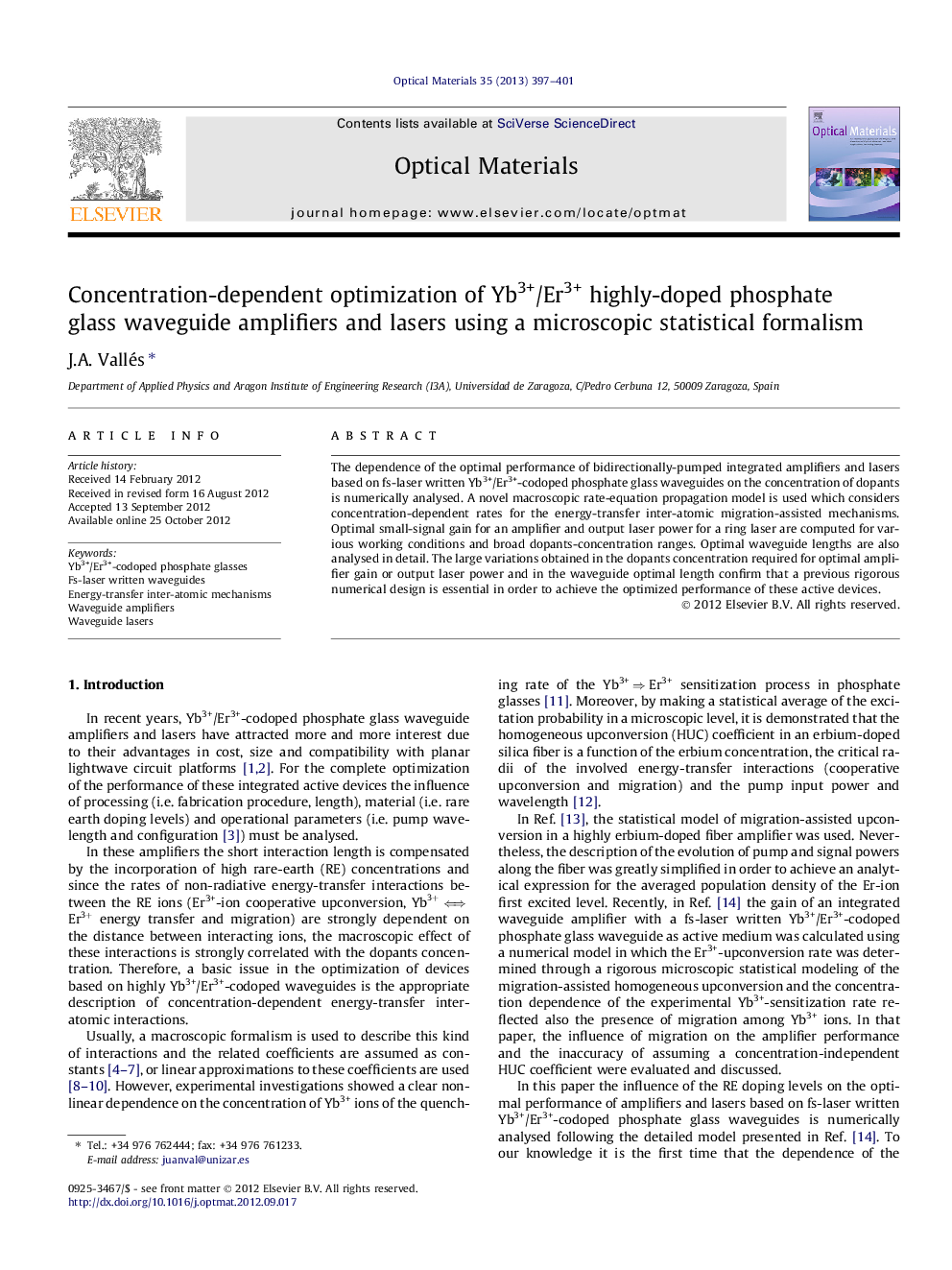| Article ID | Journal | Published Year | Pages | File Type |
|---|---|---|---|---|
| 1495121 | Optical Materials | 2013 | 5 Pages |
The dependence of the optimal performance of bidirectionally-pumped integrated amplifiers and lasers based on fs-laser written Yb3+/Er3+-codoped phosphate glass waveguides on the concentration of dopants is numerically analysed. A novel macroscopic rate-equation propagation model is used which considers concentration-dependent rates for the energy-transfer inter-atomic migration-assisted mechanisms. Optimal small-signal gain for an amplifier and output laser power for a ring laser are computed for various working conditions and broad dopants-concentration ranges. Optimal waveguide lengths are also analysed in detail. The large variations obtained in the dopants concentration required for optimal amplifier gain or output laser power and in the waveguide optimal length confirm that a previous rigorous numerical design is essential in order to achieve the optimized performance of these active devices.
Graphical abstractFigure optionsDownload full-size imageDownload high-quality image (136 K)Download as PowerPoint slideHighlights► Concentration dependence of energy transfer coefficients is rigorously considered. ► Optimized design of amplifiers and ring lasers. ► Optimal lengths and dopant concentrations greatly differ. ► Previous design is essential to optimize active devices’ performance.
